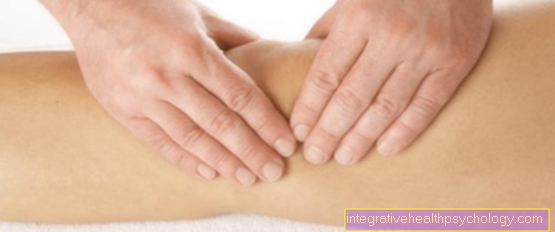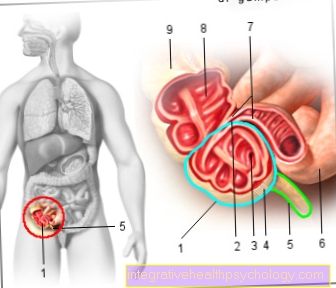Exercises against muscle tension in impingement syndrome
Note
You are in the subtopic Physiotherapy for impingement syndrome.
You can get to the start page for this topic at Physiotherapy for impingement syndrome.
You can find the medical-orthopedic part under our topic Impingement Syndrome, written by Dr. Nicolas Gumpert.
Muscle tension in the neck and shoulder muscles due to one-sided, recurring everyday / work loads, possible shoulder joint instability.
Appointment with a shoulder specialist

I would be happy to advise you!
Who am I?
My name is Carmen Heinz. I am a specialist in orthopedics and trauma surgery in the specialist team of .
The shoulder joint is one of the most complicated joints in the human body.
The treatment of the shoulder (rotator cuff, impingement syndrome, calcified shoulder (tendinosis calcarea, biceps tendon, etc.) therefore requires a lot of experience.
I treat a wide variety of shoulder diseases in a conservative way.
The aim of any therapy is treatment with full recovery without surgery.
Which therapy achieves the best results in the long term can only be determined after looking at all of the information (Examination, X-ray, ultrasound, MRI, etc.) be assessed.
You can find me in:
- Lumedis - your orthopedic surgeon
Kaiserstrasse 14
60311 Frankfurt am Main
Directly to the online appointment arrangement
Unfortunately, it is currently only possible to make an appointment with private health insurers. I hope for your understanding!
You can find more information about myself at Carmen Heinz.
Therapeutic Techniques
- Trigger point treatment
- Functional massage
- Tape (see physical therapy)
- Muscle stretching
With the functional massage, the tense Musculature massaged with simultaneous movement of the arm across its course. The duration and intensity of the functional massage depend on the individual findings.
Medium dosage: every other day, a few minutes per pain point
The treatment can trigger a painful "well-being". This should not last after the treatment, but give way to pain relief !!
1. Self-exercise against muscle relaxation during impingement


Starting position
Sit on a stool, upright posture, the affected arm is spread apart until the symptoms appear, contact with 3 fingertips in the hollow above the shoulder blade bone
Exercise execution
When the arm spreads, pressure is exerted on the muscles; when the arm spreads, the pressure is released
effect
Relaxation of the shoulder muscle, pain relief
2. Self-exercise against muscle tension in impingement

Starting position
Lie on your back, pillow, 2 tennis balls or hedgehog balls under the pain points of the muscles, on the right and left of the spine
Exercise execution
the head is slowly moved to the right and left, or forwards towards the sternum and back towards the neck
effect
Relaxation, pain relief
Self-exercise against muscle tension in impingement 3
Starting position: Stand on the wall, 2 hedgehog balls or tennis balls are on the right and left of the thoracic spine
Exercise execution: By slowly kneeling down while pressing the back against the balls, muscles and fasciae are massaged parallel to the spine.
effect: Relaxation, pain relief
Self-exercise against muscle tension in impingement 4
Starting position: Lying on the side, a fascia ball, tennis ball or hedgehog ball is located under the shoulder blade below the shoulder blade bone
Exercise execution: by slowly rolling back and forth on the ball, the shoulder blade muscles and the fasciae are massaged
























.jpg)



